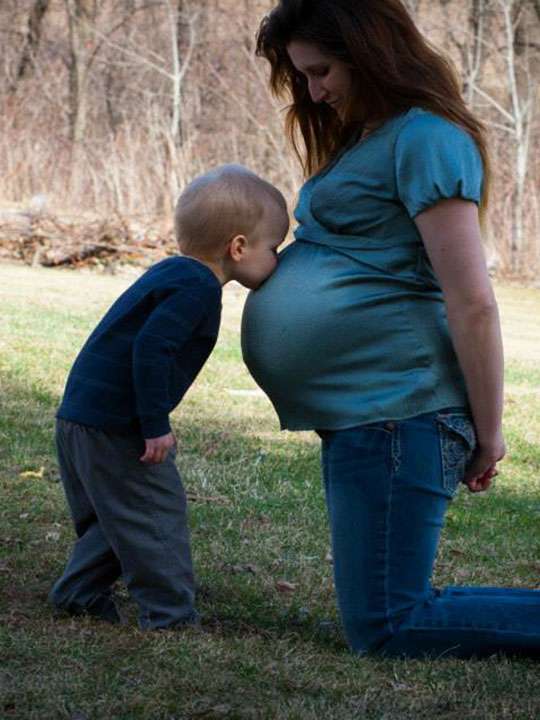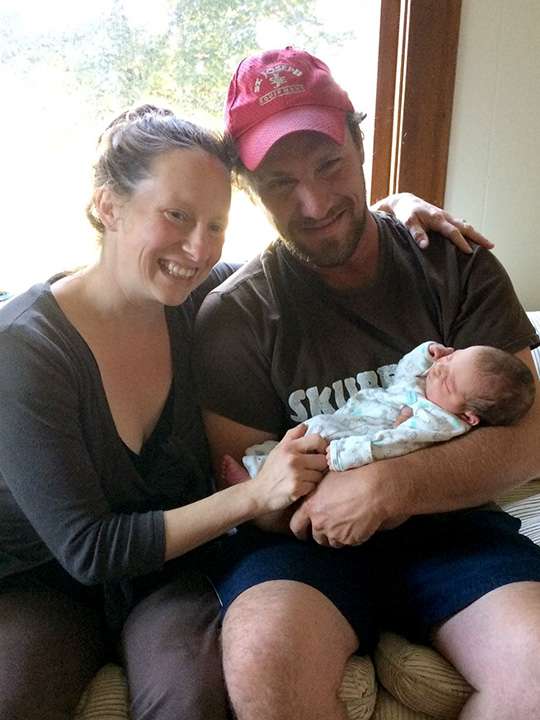Prenatal Care
The initial prenatal visit will be the longest visit, including a complete physical exam and lab work, unless you are transferring care from another provider and have already had this done. I will see most women on the regular schedule, which means every month until 28 weeks, then every 2 weeks until 36 weeks, then every week until delivery. This schedule may be altered (fewer visits or more visits) depending on individual needs of each client. Prenatal care is done in one of my two office locations, Viroqua or Westby.For home birth clients, I do a home visit at 36 weeks to make sure the home is ready for your birth, check your supplies for birth, make sure I know how to get there, do your regular prenatal exam, and finalize plans for your birth. Prenatal care includes nutritional counseling, general counseling, weight check, urine check for glucose and protein, blood pressure check, general physical exam for edema, reflexes and other potential problems, and checking in on how baby is doing by palpation of position and size, measuring fundal height and listening to fetal heart tones. Further fetal assessment will be done if I decide it is necessary for some reason. These include fetal movement counts done by you, and non-stress testing done by me in my office. If I feel you need an ultrasound assessment, or you request one, I will schedule it at the local hospital or at Open Door Birth Center.


Labor & Delivery
My role at your birth is to act as the guardian of normal birth. I believe that your birth will proceed safely if I interfere as little as possible, so I will attempt to remain in the background. I will monitor the baby’s heart rate on a regular basis, and provide as much or as little labor support as you request. Midwife means “with woman”. To me that means I will be there in the capacity that you need. Some women need me to hold their hand and talk them through every contraction. Some women need me to be silent and invisible and sit in the corner and watch, or even in the other room and come in only to check on the fetal heart tones and to assist the actual delivery.
Water Birthing
Water is often used by women to ease the discomforts of labor. Whether standing in a shower, sitting in your own bathtub at home, or fully reclining in a large tub built just for laboring, many women find instant relief of their labor discomfort from the use of water. Their relaxed bodies release fewer stress hormones and their labors proceed more quickly and easily, with less discomfort. No wonder that the idea of water immersion is so appealing to many women.Open Door Birth Center is set up for water birth for clients who choose this option. For clients who wish to have a water birth at home, the one obvious need is the tub. If the client has a deep tub, such as a Jacuzzi, in her home, this is an ideal option for her. Use of a standard bathtub or shower may be sufficient, but most women find that the greatest degree of relaxation is achieved if the belly can be submerged as fully as possible. For clients who want to have the deeper water available but do not have a built-in Jacuzzi-type tub, I will assist them in finding a tub to rent or purchase. You may enter the tub at any time during active labor, although waiting until you are dilated to about 5 cms is recommended. Often, the relaxation afforded by the warm water will allow you to dilate more quickly and easily, resulting in a shorter, more comfortable labor.
CONSIDERATIONS FOR TUB USE & PLACEMENT:
Location of electrical outlets
Size and temperature-setting of hot water heater
Sturdiness of flooring where tub will be placed
Availability of ample bath towels
Ability to protect flooring under tub
Easy access to out-of-tub birthing/recovery area (bed, mattress on floor, etc)
Proximity to bathroom (true for all births!)
Laboring in the water is almost always possible and usually very helpful. If, as part of your birth plan, it is also your intention to give birth in the water, I am comfortable with this as a goal and willing to do my best to help you achieve it. However, like anything else in a birth plan, this needs to be flexible; if events occur during your labor that contraindicate water birthing, you must be willing to follow the course of action that is best for you and your baby, even if this means birthing outside the tub.
Postpartum Care
Routine care after the birth
- Check fundus, lochia and vital signs
- Monitoring of baby’s transition to extrauterine life
- Help establish breastfeeding
- Perineal assessment, instructions for care, suturing if needed
- Complete newborn exam which will be done next to mom
- Help with diapering and dressing if requested
- General instructions for the postpartum period
Follow up Care
I will call you 12-24 hours after the birth. I will do a postpartum home visit between 24-36 hours of birth, and on the third day. I will do additional home visits within the first 2 weeks, if you or your baby have any problems. Depending on the problem, I may request that you or your baby see a physician. I will see you and your baby at least 2 more times during the postpartum period either in my office or in your home. Those visits are usually at 2 weeks and 6 weeks postpartum.

My Fees
My fees are based on a philosophy of equitable service to all. I establish the fee based on client need, and practice expenses. I accept Badgercare, Sharing Plans and some bartering arrangements. We will discuss the details at or before your initial consultation.